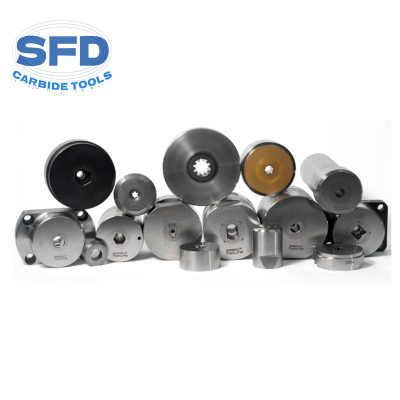At present, the most commonly used in tungsten carbide die is cobalt-based cemented carbide, which includes tungsten-cobalt, tungsten-titanium-cobalt, and tungsten-titanium-tantalum (niobium) alloys. Among them, tungsten-cobalt alloy is the most widely used and commercially mature hard alloy.
Its main components are tungsten carbide (WC) and cobalt (Co), with the grade indicated by the code YG followed by the percentage value of cobalt content.

Tungsten-titanium-cobalt alloy is an extension of tungsten-cobalt alloy with the addition of titanium carbide (TiC). It has higher hardness but lower toughness compared to tungsten-cobalt alloy. Its grade is indicated by the code YT followed by the percentage value of titanium carbide content.
Tungsten-tantalum (niobium) alloy, also known as universal tungsten carbide, has higher hardness and strength than other hard alloys.
However, in addition to WC, TiC, and Co, it also contains rare earth element carbides such as tantalum carbide (TaC) or niobium carbide (NbC), making it expensive and less applicable. Its grade is indicated by the code YW followed by a numerical sequence.
In addition to cobalt-based hard alloys, steel-bonded hard alloys have also been used to a certain extent. Steel-bonded hard alloys use steel as the binder phase instead of traditional cobalt and use refractory metal carbides as the hard phase.
Therefore, in addition to having good hardness and wear resistance, steel-bonded hard alloys also inherit the processability and heat treatability of the steel matrix, making them a new type of tool material between traditional hard alloys and tool steels.
In China, steel-bonded hard alloys are mainly divided into WC type and TiC type, with more comprehensive research and development in WC-type steel-bonded hard metal.





